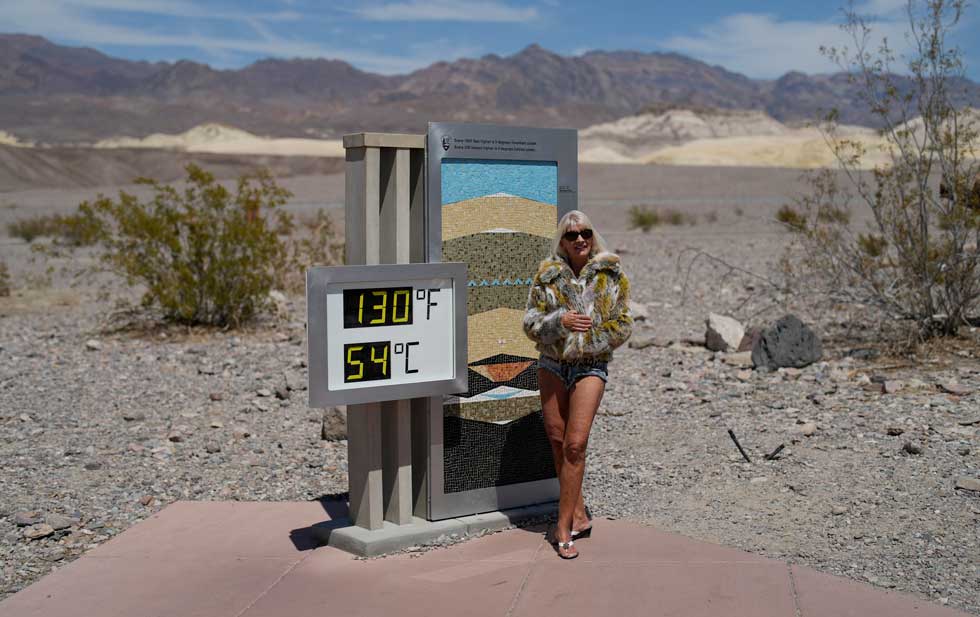Meteorological Records Confirm Hottest June and Extreme Weather in 2023
In a summer marked by soaring temperatures and extreme weather events, meteorological records are shattering like never before. June of this year has been unanimously declared the hottest June on record by major weather-tracking organizations. However, this record was short-lived as July 4th quickly claimed the title of the world‘s hottest day, according to the University of Maine Climate Reanalyzer. But it didn’t stop there, as temperatures continued to reach unprecedented heights on July 5th and 6th. The World Meteorological Organization and the Japan Meteorological Agency confirmed the subsequent week as officially the hottest one yet.
These record-breaking statistics offer a glimpse into the broader picture of a planet undergoing significant warming due to climate change. Vibrant reds and purples on weather maps and in daily reports serve as striking visual representations of the increasing heat gripping the world. However, the consequences of this extreme weather extend beyond numbers and charts. Tragically, more than 100 individuals have already lost their lives in heatwaves in the United States and India this summer.
The importance of these records goes beyond mere statistics. Infrastructure designers and agricultural workers heavily rely on these records to plan for worst-case scenarios. Russell Vose, director of the climate analysis group at the US National Oceanic and Atmospheric Administration (NOAA), emphasized the significance of these records in guiding crucial decision-making in various sectors. According to NOAA, nearly 5,000 heat and rainfall records have been broken or matched in the United States in recent weeks, with more than 10,000 worldwide. Texas alone has broken an astounding 369 daily records for maximum temperatures since June 1st.
The data speaks for itself, emphasizing the urgency of addressing climate change. Since the year 2000, the United States has experienced twice as many records broken for heat compared to cold. Experts predict that if the current trend continues, 2023 might be crowned the warmest year on record. Gavin Schmidt, director of NASA’s Goddard Institute for Space Studies, warned of the escalating likelihood of this occurrence. The broader the geographic area and time period covered by these records, the stronger the indication that they are a result of climate change rather than natural weather variation, according to John Nielsen-Gammon, a Texas state climatologist.
While global records provide persuasive evidence, local data adds another layer of shock. Death Valley, for example, has approached its highest recorded temperature in history, with a disputed measurement of approximately 56.7 degrees Celsius (134 degrees Fahrenheit). Within major US cities, Phoenix has recently made headlines with its 19th consecutive day of scorching temperatures soaring above 110 degrees Fahrenheit (43.3 degrees Celsius).
The attention-grabbing extremes of these records reflect human curiosity, according to Russell Vose. However, relying solely on numbers fails to accurately convey the visceral experience of such intense weather. Chris Field, a climate scientist at Stanford University, stressed the limitations of scientific vocabulary in capturing the human impact of climate change. Nevertheless, these records underscore the reality of living in a changing world, as Field highlights.
Climate scientists argue that the long-term warming caused by the burning of fossil fuels, such as coal, oil, and natural gas, remains the primary driver behind rising temperatures. Occasional natural warming events like El Niño, which the planet is currently experiencing, can amplify these effects. An El Niño formed in June with scientists forecasting its strength. The previous three years saw the soothing coolness of La Niña tempering the human-induced heat to some extent.
The vicious cycle of intense weather is not linear, as scientific evidence from the past demonstrates. According to climatologist Natalie Mahowald from Cornell University, weather patterns will not worsen consistently each year but will intensify over time due to climate change. Richard Rood from the University of Michigan has even refrained from posting on extreme weather records due to their increasing frequency and their role in prolonging the urgency needed to address climate change.
Validating these records is an intricate and time-consuming process. While NOAA tracks weather observations from tens of thousands of stations across the United States and worldwide, discrepancies and disagreements often arise. Centuries-old data, in particular, can be subject to scrutiny by the international committee tasked with certifying world records. Vose explained that due to the accumulating extreme weather events, authorities are still verifying the 2020 and 2021 records of 54 degrees Celsius (130 degrees Fahrenheit) in Death Valley.
In the end, it is not individual records, but rather the broader narrative and impact that truly matter, according to Victor Gensini, a climate scientist at Northern Illinois University. The amalgamation of these records paints an alarming depiction of a changing climate. As the world grapples with the consequences of extreme weather, acknowledging these records is only the first step towards implementing necessary measures to tackle climate change head-on.
